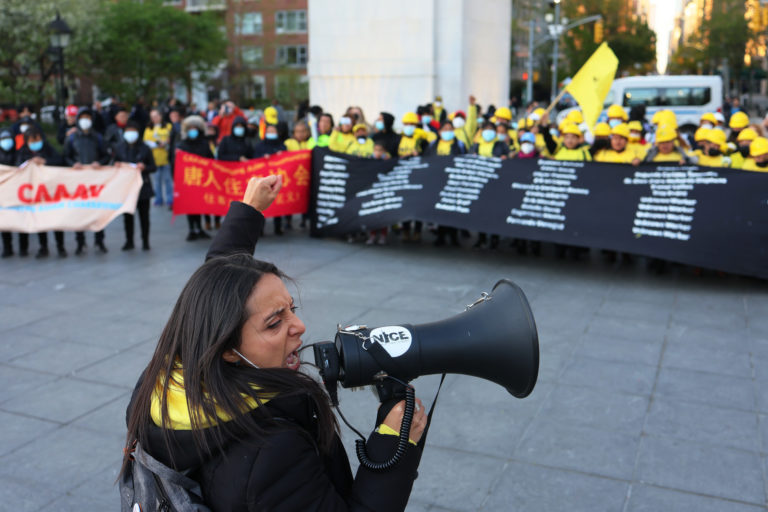In October of 2013, New York City enacted the Pregnant Workers Fairness Act (Act). Under the new law, most employers in New York City must provide reasonable accommodations for pregnant workers. This post will explain what the Act accomplishes, why it was necessary, and how the rest of the country can learn from New York’s example.
What the Pregnant Workers Fairness Act Accomplishes
The Act strikes a balance between the needs of employers and their pregnant employees. It requires that employers provide “reasonable accommodations” to workers who are pregnant or who have a medical condition related to pregnancy and childbirth. These accommodations could include “bathroom breaks, leave for a period of disability arising from childbirth, breaks to facilitate increased water intake, periodic rest for those who stand for long periods of time, and assistance with manual labor, among other things.” However, the employer need not provide accommodations if:
1) The employer can prove that providing the accommodations would be an “undue hardship”;
2) The employer can prove that, even with reasonable accommodations, the pregnant worker would not be able to “satisfy the essential requisites” of her job; or
3) The employer has fewer than four employees.
Employers must provide all workers with written notice of their rights under the Act.
Why the Pregnant Workers Fairness Act was Necessary
The New York City council found that “pregnant women [were] vulnerable to discrimination in the workplace in New York City.” The Council explained that women have been “removed from their positions, placed on unpaid leave, or fired” for requesting accommodations that would allow them to work during their pregnancies. Unfortunately, these experiences are all too common—both in New York and in other American cities. While three federal laws provide workplace protections for pregnant employees, they may not do enough to help pregnant workers retain their jobs.
Americans with Disabilities Act: The Americans with Disabilities Act (ADA) provides protection for a (very) small number of pregnant workers. Pregnancy itself is not covered by the ADA. In a few cases, however, courts have held that the ADA applies to women who develop severe, pregnancy-related medical disorders. Some commentators have suggested that the 2008 amendments to the ADA protect women with a wider range of pregnancy-related conditions. Nevertheless, it is not clear that this is the case.
Pregnancy Discrimination Act: Under the Pregnancy Discrimination Act (PDA), employers must treat pregnant employees the same way they treat other employees who are “similar in their ability or inability to work.” However, employers are not required to provide any special accommodations for pregnant women. So, for example, if an employer does not allow any workers to sit down during a shift, it may forbid pregnant workers from sitting.
Family Medical Leave Act: The Family Medical Leave Act (FMLA) allows covered employees to take up to twelve weeks of unpaid leave to address “serious health condition[s]” that render them unable to work. Women with pregnancy-related health conditions are permitted to take FMLA leave, but many are not eager to do so. Instead, these women want to earn a paycheck (and save their leave so they can use it when their babies arrive).
Thus, the Pregnant Workers Fairness Act protects a group of workers who are particularly vulnerable under federal law: workers who need minor, pregnancy-specific accommodations to remain on the job.
How the Nation Can Learn From New York City
The Pregnant Workers Fairness Act can provide two important lessons to legislators outside of New York City. First, the Act exemplifies the important role that local governments can play in safeguarding workers’ rights. While legislation to protect the rights of pregnant employees stalled in Congress and in the New York State Legislature, New York City quickly enacted its own law to address the same problem.
Second, the Act will allow other legislators to see how mandatory accommodations for pregnant workers operate in practice. If New York City employers are able to provide these accommodations without too much difficulty, legislators in other jurisdictions could use New York’s story to help garner support for similar laws.






Daily News & Commentary
Start your day with our roundup of the latest labor developments. See all
December 22
Worker-friendly legislation enacted in New York; UW Professor wins free speech case; Trucking company ordered to pay $23 million to Teamsters.
December 21
Argentine unions march against labor law reform; WNBA players vote to authorize a strike; and the NLRB prepares to clear its backlog.
December 19
Labor law professors file an amici curiae and the NLRB regains quorum.
December 18
New Jersey adopts disparate impact rules; Teamsters oppose railroad merger; court pauses more shutdown layoffs.
December 17
The TSA suspends a labor union representing 47,000 officers for a second time; the Trump administration seeks to recruit over 1,000 artificial intelligence experts to the federal workforce; and the New York Times reports on the tumultuous changes that U.S. labor relations has seen over the past year.
December 16
Second Circuit affirms dismissal of former collegiate athletes’ antitrust suit; UPS will invest $120 million in truck-unloading robots; Sharon Block argues there are reasons for optimism about labor’s future.